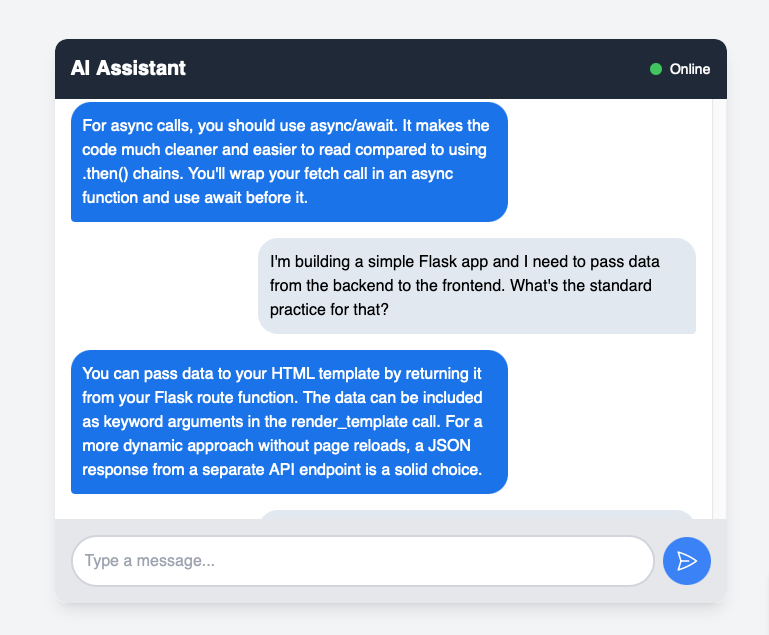Introduction to NumPy in Python
- Samul Black

- Aug 14, 2024
- 5 min read
Updated: Jun 3
NumPy, short for Numerical Python, is a powerful library for numerical computing in Python. It is the foundation for many scientific computing and data analysis libraries, including pandas, SciPy, and scikit-learn. With its ability to handle large datasets and perform complex mathematical operations efficiently, NumPy has become an indispensable tool for data scientists, engineers, and researchers alike. In this blog, we’ll explore the key features of NumPy, its core components, and how to use it effectively for various numerical tasks.

What is NumPy in Python?
NumPy is an open-source library that provides support for large, multi-dimensional arrays and matrices, along with a collection of mathematical functions to operate on these arrays. It’s designed to be highly efficient for numerical operations, thanks to its underlying implementation in C and Fortran. NumPy offers an array object, ndarray, that is more powerful and flexible than Python's built-in lists, enabling more advanced mathematical and statistical operations. Key features of NumPy:
N-Dimensional Arrays: NumPy’s core feature is the ndarray, an N-dimensional array object that supports vectorized operations and broadcasting. This allows for efficient computation on large datasets.
Mathematical Functions: NumPy includes a comprehensive set of mathematical functions for operations such as linear algebra, statistical analysis, and Fourier transforms.
Broadcasting: This powerful feature allows NumPy to perform element-wise operations on arrays of different shapes, making it easier to apply functions without explicit loops.
Performance: NumPy operations are optimized for performance, leveraging low-level implementations to achieve fast computation, especially with large datasets.
Integration: NumPy integrates seamlessly with other scientific computing libraries, enabling advanced data analysis and machine learning workflows.
Getting Started with NumPy in Python
To use NumPy, you first need to install it and import it into your Python script or notebook:
pip install numpyimport numpy as np
Creating Arrays in Numpy
NumPy arrays can be created from Python lists or tuples, or through various built-in functions.
# Creating an array from a Python list
array_from_list = np.array([1, 2, 3, 4, 5])
# Creating a 2D array (matrix)
matrix = np.array([[1, 2, 3], [4, 5, 6]])
# Creating arrays with specific values
zeros_array = np.zeros((3, 3)) # 3x3 array of zeros
ones_array = np.ones((2, 4)) # 2x4 array of ones
identity_matrix = np.eye(4) # 4x4 identity matrixBasic Operations in Numpy
NumPy supports a wide range of mathematical operations that can be performed element-wise or using linear algebra functions.
# Basic arithmetic operations
sum_array = array_from_list + 5 # Add 5 to each element
product_array = array_from_list * 2 # Multiply each element by 2
# Mathematical functions
sqrt_array = np.sqrt(array_from_list) # Square root of each element
mean_value = np.mean(array_from_list) # Mean of the arrayIndexing and Slicing in Numpy
NumPy arrays support advanced indexing and slicing techniques, allowing for efficient data manipulation.
# Accessing elements
first_element = array_from_list[0] # First element
sub_array = matrix[1, :] # Second row of the matrix
# Slicing
sliced_array = array_from_list[1:4] # Elements from index 1 to 3Broadcasting in Numpy
Broadcasting allows NumPy to perform operations on arrays of different shapes without explicit looping.
# Adding a scalar to an array
broadcasted_array = array_from_list + 10 # Adds 10 to each element
# Adding arrays of different shapes
matrix_broadcasted = matrix + np.array([1, 2, 3]) # Adds row vector to each row of the matrixLinear Algebra Operations in Numpy
NumPy provides support for various linear algebra operations, such as matrix multiplication and decomposition.
# Matrix multiplication
matrix_product = np.dot(matrix, matrix.T) # Dot product of matrix and its transpose
# Eigenvalues and eigenvectors
eigenvalues, eigenvectors = np.linalg.eig(matrix_product) # Compute eigenvalues and eigenvectorsWhy Use NumPy? – Real-World Use Cases
1. Numerical Computations & Array Operations
NumPy provides a high-performance multidimensional array object and tools for working with these arrays. It’s much faster and more memory-efficient than using Python’s native lists, especially for numerical computations.
Use Case Example:
Performing element-wise arithmetic (add, subtract, multiply, divide) on large datasets.
Fast vectorized operations without writing loops.
2. Data Analysis and Manipulation
Pandas is built on top of NumPy. Under the hood, all dataframes use NumPy arrays for computation. That makes NumPy a critical foundation for data manipulation workflows.
Use Case Example:
Handling large tabular datasets by combining, filtering, or computing stats (mean, median, etc.)
import numpy as np
# 1. Simulate a large tabular dataset (e.g., 100,000 rows, 4 columns)
# Columns: [Age, Height (cm), Weight (kg), Income ($)]
np.random.seed(0)
data = np.random.rand(100000, 4) * [80, 50, 100, 100000] + [10, 140, 40, 20000]
# 2. Column names for reference (not part of NumPy arrays)
columns = ['Age', 'Height', 'Weight', 'Income']
# 3. Compute basic statistics (mean, median, std dev) for each column
means = np.mean(data, axis=0)
medians = np.median(data, axis=0)
stds = np.std(data, axis=0)
print("Column-wise Mean:", dict(zip(columns, means)))
print("Column-wise Median:", dict(zip(columns, medians)))
print("Column-wise Std Dev:", dict(zip(columns, stds)))
# 4. Filter rows: Find people with income > $70,000 and age < 40
filtered = data[(data[:, 3] > 70000) & (data[:, 0] < 40)]
print("Filtered rows count:", len(filtered))
# 5. Combine with another dataset (vertical stacking)
# Simulate a second dataset (e.g., new batch of users)
new_data = np.random.rand(50000, 4) * [80, 50, 100, 100000] + [10, 140, 40, 20000]
combined = np.vstack((data, new_data))
print("Combined dataset shape:", combined.shape)3. Machine Learning
Almost all machine learning libraries (like TensorFlow, PyTorch, Scikit-learn) use NumPy arrays for input data, parameters, and internal operations.
Use Case Example:
Representing datasets (images, audio, text) as NumPy arrays.
Performing matrix operations for training models.
# Simulated dataset for ML
X = np.random.rand(100, 5) # 100 samples, 5 features
y = np.random.randint(0, 2, 100) # Binary labels4. Scientific Computing
Fields like physics, astronomy, chemistry, and biology rely on heavy numerical computations, and NumPy provides the backbone for simulations, modeling, and analysis.
Use Case Example:
Solving linear equations, Fourier transforms, eigenvalues, integration, etc.
# Solving a linear system: Ax = b
A = np.array([[3, 1], [1, 2]])
b = np.array([9, 8])
x = np.linalg.solve(A, b) # Output: array([2., 3.])5. Image Processing
Images are just matrices of pixel values. NumPy makes it easy to manipulate them directly without any specialized library.
Use Case Example:
Reading, filtering, transforming (rotate, crop, resize) images as arrays.
# Apply grayscale filter
image = np.random.randint(0, 255, (100, 100, 3)) # Dummy RGB image
gray = image.mean(axis=2) # Convert to grayscale6. Signal Processing
Waveforms and time-series signals are numerical arrays. NumPy supports FFTs (Fast Fourier Transforms), convolution, and filtering, useful for audio, seismology, and telecom applications.
Use Case Example:
Analyzing audio frequency components using FFT.
7. Finance and Quantitative Analysis
NumPy enables building models for stock market analysis, portfolio optimization, and risk calculations.
Use Case Example:
Simulating Monte Carlo paths for option pricing.
Calculating moving averages and volatility.
# Simulating stock returns
returns = np.random.normal(0.001, 0.02, 1000)
cumulative = np.cumprod(1 + returns)Practical Everyday Scenarios
Loading and saving large datasets (np.loadtxt, np.genfromtxt, np.save, np.load)
Creating simulation data (random generators, normal distributions)
Normalizing and standardizing datasets
Performing statistical tests (mean, median, std dev, correlation)
Time-series smoothing and forecasting
Efficient looping with broadcasting (no for loops!)
Whether you're:
A data scientist working with machine learning models,
A physicist solving partial differential equations,
A hobbyist analyzing your workout data,
Or a student trying to understand matrix algebra—
NumPy is your gateway to fast, efficient, and scalable numerical computing in Python.
Conclusion
NumPy is an essential library for anyone involved in numerical computing with Python. Its powerful array object, along with a rich set of mathematical functions and optimisations for performance, makes it the backbone of scientific computing and data analysis in the Python ecosystem. Whether you’re working on simple data manipulation tasks or complex mathematical operations, mastering NumPy will significantly enhance your ability to handle numerical data efficiently. As you dive deeper into data science and machine learning, NumPy will be an invaluable tool in your toolkit, enabling you to tackle a wide range of computational challenges.




